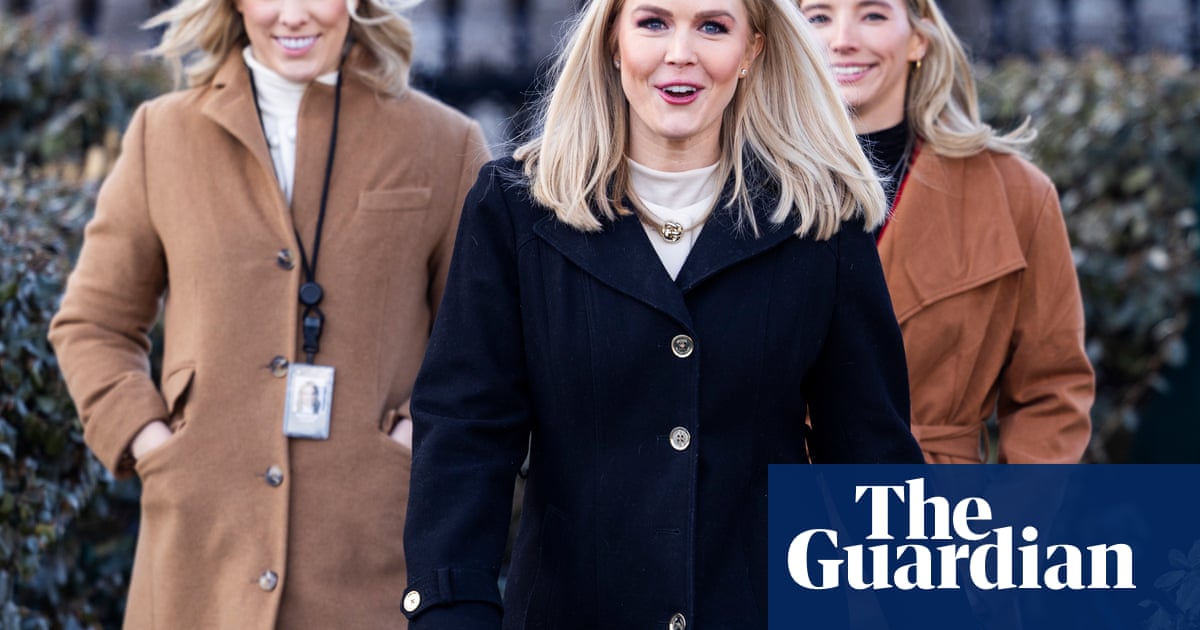The idea of “chic” is a fashion-world cliche. At best it is a know-it-when-you-see-it vibe, at worst a lazy adjective chosen by a writer to describe something that reminds her of Jane Birkin. It feels inoffensive enough. But now, “chic” has become something of a lightning rod online – a shorthand for a type of conservative-coded aesthetic.
It began last month, when a creator named Tara Langdale posted avideoto her TikTok following of just over 30,000 in which she sipped from a long-stemmed wine glass and read off a list of things she finds “incredibly UN-chic”. Wearing stacks of gold bracelets and a ballet-pink manicure, Langdale called out fashion choices like tattoos, Lululemon, visible panty lines, baggy denim andhunting camouflageas unchic, because, to her, these choices seemed “cheap”.
“Remember, money talks, wealth whispers,” Langdale said.
The not-entirely-serious video racked up views and sparked a conversation about how style preferences can carry political baggage. “This is giving mean girl,” one user wrote in the comments. “Classism isn’t chic, hope this helps,” wrote another. “Voting for Trump is unchic,” went a third. Many took particular issue with Langdale’s anti-tattoo stance, which they saw as stuffy or downright rude.
Such comments came with a strong dose of projection: Langdale, a lifestyle influencer, does not post about politics, sticking to fashion, makeup or motherhood. Nevertheless, many in the fashionTikTokcommunity felt her commentary on “chic” aligned with the feminine aesthetic of Trump 2.0, where the rigidand airbrushed beauty standards of Maga officials such as Karoline Leavitt, Kristi Noem and Nancy Mace are celebrated.
“Chic is starting to feel like a conservative dogwhistle that polices women’s looks,” said Elysia Berman, a creative director and content creator based in New York whoposteda takedown of Langdale’s unchic list. “What chic has come to mean to a lot of people is a very narrow definition of elegance. It’s this thin, white, blonde woman who speaks softly and is basically Grace Kelly.”
The ideal vision of womanhood from Donald Trump’s first term was caked foundation and clumpy mascara, as seen on the likes of Kimberly Guilfoyle and Lara Trump. But the facial augmentation and overly sexy aesthetic tied to the president’s inner circle – see “Ice Barbie” Noem, who posts full glam videos while deporting immigrants – does not necessarily match that of the president’s more social media savvy supporters, many of whom are now opting for a sleeker presentation.
MomfluencersandtradwivescelebrateRFK Jr’s “Make America Healthy Again” policies while wearing breezy milkmaid dresses.Evie Magazine, a politically conservative version of Cosmo, appropriates the trending visuals of feminist magazines with headlines that decry body positivity and promote vaccine skepticism. As New York Magazine writer Brock Colyardescribedyoung Republicans at a post-election night party: “Many are hot enough to be extras in the upcoming American Psycho remake.”
The word “chic” has always been tied to a French, or francophile, sense of femininity, usually in reference to a woman who subscribes to Vogue and innately understands how to look good. But those turning it into a dirty word on TikTok, taking note of how it aligns with a changing conservative aesthetic, see it as having a more prescriptive, even oppressive, meaning for women’s fashion.
Suzanne Lambert, a DC-based comedian whose “conservative girl” mock makeup tutorials went viral earlier this year, described the right’s obsession with all things ultra-feminine as “just this soulless, boring kind of fashion”.
“Republicans are more focused on assimilating than we are on the left, so it makes sense that they all end up looking the same,” Lambert said.
Ultimately, anyone who’s attempting to look chic – or wealthy – is probably neither of those things. Those TikTok imitators who equate chicness with pearls and a Leavitt-esque tweed shift dress? “They think it’s giving Reagan, but it’s really giving Shein,” said Lambert.
(Ironically, some of the unchic pieces on Langdale’s list – Lululemon leggings, Golden Goose sneakers, a Louis Vuitton carryall bag – come with hefty price tags and could connote liberal elitism.)
In an email, Langdale said that her definition of chic had nothing to do with politics. “Chic by definition means simplicity and timelessness,” she wrote. “Reading a neutral palette as ‘conservative’ conflates style choice with ideology. Conservatism as a moral or political stance varies widely across cultures and religious communities, so tagging a fitting tank top and trousers as ‘Republican’ is lazy stereotyping.”
Langdale called chic “this year’s version” of “old money” dressing, a TikTok trend that prioritized subdued, luxury items over the loud, brash and individualistic. “You can own every item on my unchic list and still be considered chic,” she wrote. “Labeling an item chic or unchic speaks only to its aesthetic, not a person’s style or worth.
The conversation around chic is ongoing.Other creators, inspired by Langdale’s video, posted about what they considered chic in their niches. A medical studentsaidit is “incredibly chic” to color coordinate scrubs with personal accessories; an office workerconsiderednot letting colleagues in on their personal lives the height of chicness.
Kat Brown, a 25-year-old New Yorker who works in fashion PR, made avideotalking about how it’s “not chic” to be overly trendy, with chicness coming from a more sustainable wardrobe. “Smart consumption is chic,” Brown said. “Chicness is more reflective of your resourcefulness and creativity, rather than any sort of socioeconomic element.”
For all the angst on chic-Tok, true insiders probably aren’t paying much attention. Fashion editors often make lists of words they consider so dull and unspecific that they prohibit writers from using them in copy; “chic” is usually right at the top. And when a word like chic is so bland to begin with, who cares if its wielded as an insult? As a British couturier played by Daniel Day-Lewis in the 2017 period drama Phantom Threadbemoanedof “chic”: “That filthy little word. Whoever invented that ought to be spanked in public. I don’t even know what that word means.”
